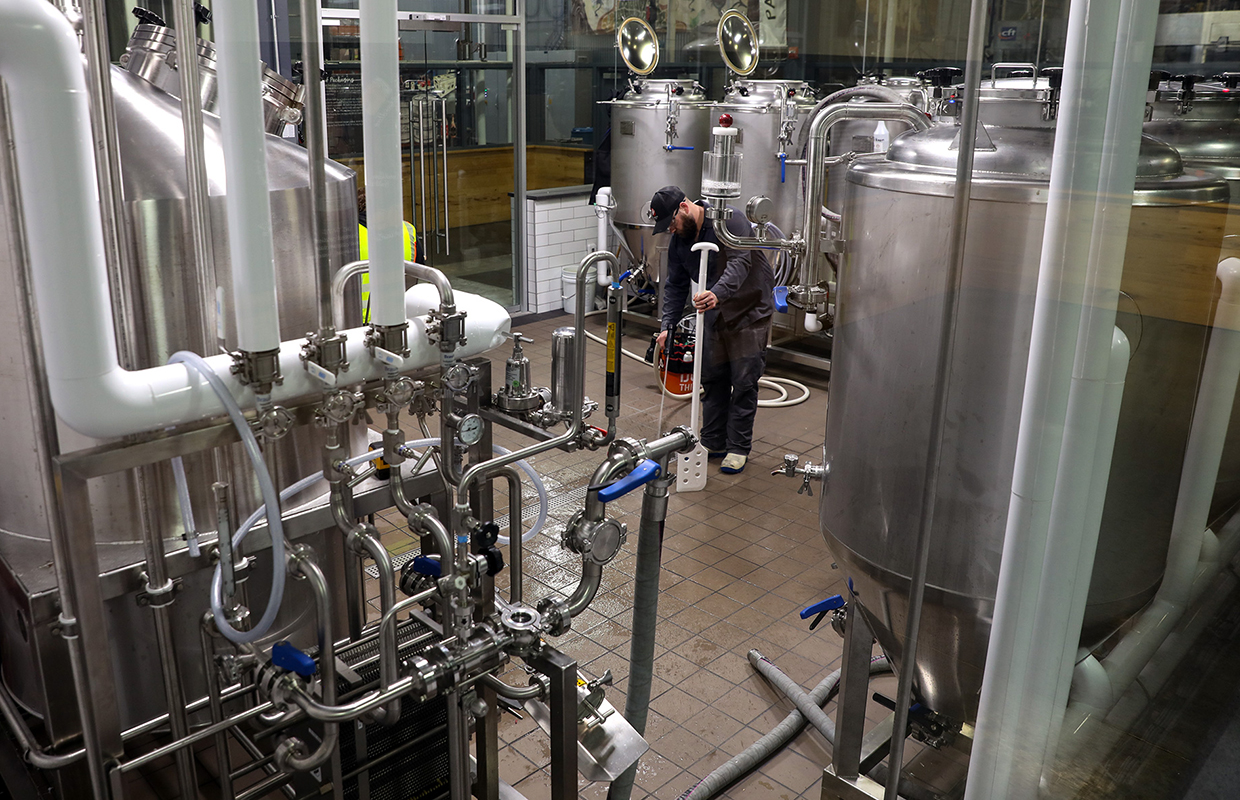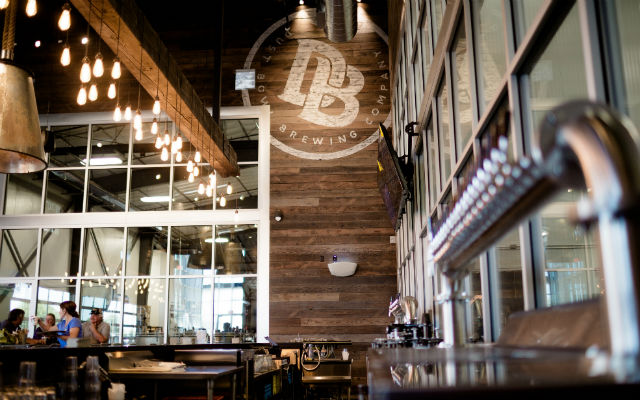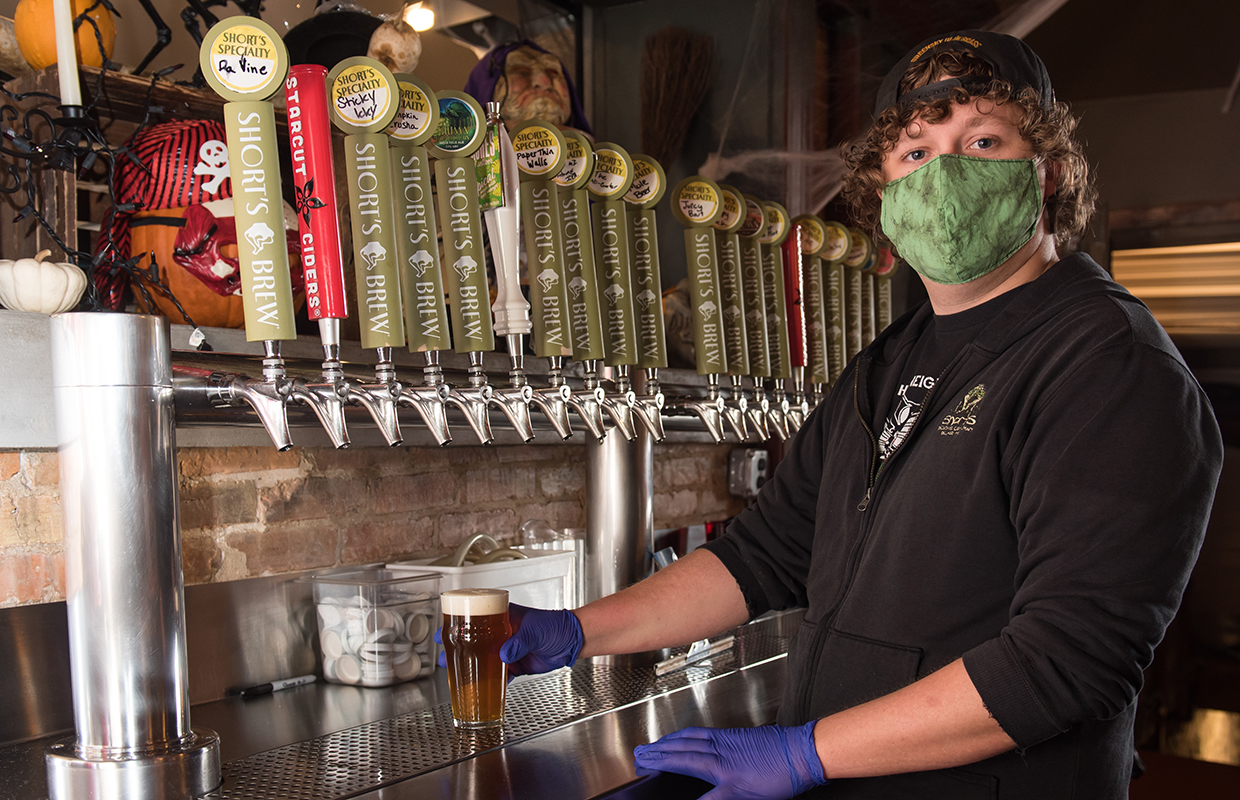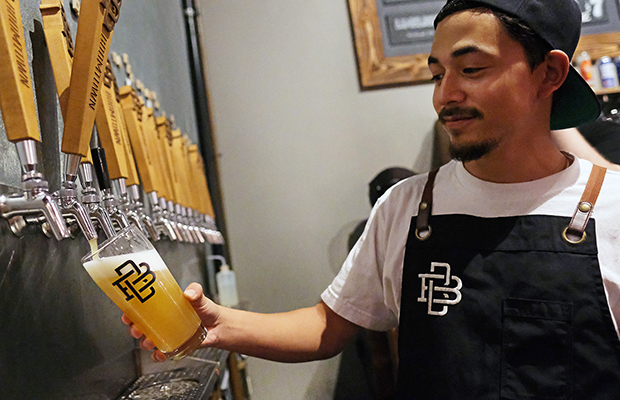
Tucked away in the back of Tröegs is a glass-walled room with small tanks and a small brewhouse. It’s not there to make the brewery money, said co-founder John Trogner, it’s there for what COULD make money for the Pennsylvania brewery. The Scratch Lab for Tröegs was made for creative expression, learning, and trials.
“The concept of an R&D brewery was to disconnect creativity from sales,” he explained. “We don’t have to sell the beer we create — though we have all the tools that we have in the big brewhouse.
“In our production brewhouse — it doesn’t matter what size your production your brewhouse is — it creates its ‘house flavor,’ We wanted to recreate that ‘house flavor’ in this R&D world in which we could create and not have to worry about selling it.
“That relief of not having to have a crutch — the knowledge of what you create you have to sell — was a huge change for us because now we can just create and learn. So we’re constantly learning, trying new techniques and hops and fruit combinations, yeast fermentation temperatures, and all sorts of things that we wouldn’t do if we had to sell the beer. We don’t have in the back of our heads saying, well, we can’t really try whatever — X, Y, and Z — because if it goes wrong, I can’t sell it. That’s gone completely.”
Doing that, he said, opened up the creative and learning side so now the brew team really can focus on exploring new things.
“Once we discover them, then we want to be able to share them with our world,” he said. “That’s when we ramp it up to our brew houses — one for our taproom and then one for distribution. We’re able to brew it in larger batch sizes, basically recreate it, because now everything’s very similar in engineering and share it with our guests.”
Your brewhouse/R&D/pilot house should be a miniature version of whatever your production-size brewery was, Trogner pointed out.
Abe Kabakoff, the head pilot brewer for Sierra Nevada’s Chico, California facility, said in 2018 that the then-current pilot brewery that he runs was built to simulate the main brewhouse. The pilot brewhouse was envisioned as a tool to try out new processes and improve the main brewery. It is a five-vessel brewhouse with a mash tun, lauter tun, two boil kettles, and a whirlpool.
Scalability is a difficult thing, Kabakoff noted. Although he is working with 20-times less space, that doesn’t translate perfectly.
“We can’t take a pilot recipe and multiply everything by twenty to get a production recipe,” he said.
Base malt works by the 20-times scale, he said, but somehow the production batch gets more color out of roasted malts, so the formulation is only needed to scale up by about 17 times.
Hops have been really difficult to align well, Kabakoff added.






1 Trackback / Pingback